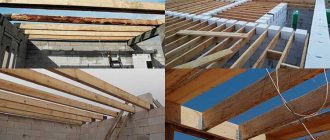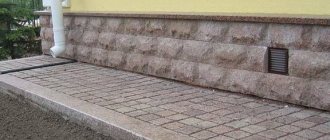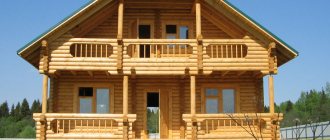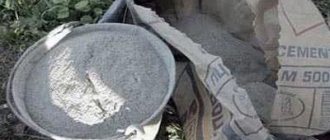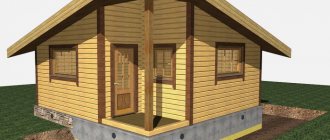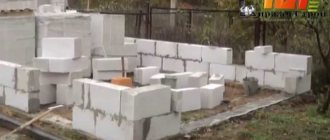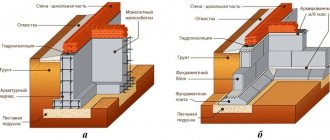Repair and decoration
05/17/2018 Anastasia Prozheva
Any person dreams of living in comfortable conditions, the list of which includes a comfortable home, a pleasant and stable microclimate. In such buildings, special attention is paid to high-quality insulation of the building. This stage is of great importance for owners of log houses. How to properly caulk a house so that you don’t have to redo the constructed creation in the future? A large number of private developers are trying to find the answer to this question.
Caulking a house made of timber is necessary for its insulation.
Having searched for a sufficient amount of material on this topic, you can come across the statement that it is not necessary to use a similar method of insulating a building. Such arguments are justified by the following fact: wood undergoes special treatment before use, and buildings erected from it should not shrink. This means that the appearance of cracks in timber buildings is excluded.
Despite this point of view, profiled beams occupy a central place in the ranking of building materials, and they also have a reasonable price. Any beam is a wooden base with all its inherent characteristics. It can dry out if a material with a natural degree of humidity is chosen for construction.
Despite the fact that insulation can be laid between the logs, this will not prevent the wood from shrinking, as a result of which its dimensions will noticeably decrease and the gaps will become more noticeable. If you do not caulk the log house, the warmed air from the room will end up on the street. Timely work will prevent the appearance of dampness on the walls and rotting of the surface.
Necessary equipment for work
Tools for caulking log houses.
Is it necessary to caulk a log house? Yes, this is necessary, because a correctly carried out process will eliminate cracks in the space between the timber and at the connection points of the crowns, heat will be retained in the room, drafts and icing will not appear there.
The material used for caulking must meet certain requirements. In terms of quality indicators, it should be similar to wood and have a clean, environmentally friendly base. Such raw materials are not characterized by changes in external data under the influence of high humidity and temperature indicators. Air should not pass through it; at the same time, the source must absorb moisture from the surrounding air and get rid of it in a timely manner. Such material should be free of rot or pests. An important indicator of such a source will be the preservation of valuable indicators for as long as possible.
Article on the topic: Garden house 15 sq. m
Among the materials used for insulating the seams of houses, swamp moss-sphagnum, flax tow, and hemp have long been used. Modern achievements in the construction field have provided a new material, jute, for mass use. One of the best options is swamp moss, which reliably protects the walls of the building from putrefactive processes and fungal manifestations.
Types of caulk.
As a result, buildings last much longer. Moss is able to actively absorb moisture, and if the need arises, it saturates the wood with it. Its base is highly breathable and has antiseptic properties. Moss can be considered an ideal material for caulking. However, it is quite difficult to finish seams in a log house with it. And it’s not easy to collect such raw materials in the required volume.
Flax tow and hemp are also used for caulking at home, but their quality indicators are much lower than the considered option. These options are classified as industrial waste, have a similar structure, hemp has thicker and stronger fibers. The disadvantage of such materials is the residue in the form of fires; over time, it begins to crumble, and there is a need for repeated work.
Jute is an imported product; it has been used in construction not so long ago. Any house will be reliably caulked with this type of material, providing it with special strength, hygroscopicity, and excellent air conduction. Jute is not capable of rotting or molding; its strong base does not allow birds to pull fibers out of cracks, which is often observed when using tow and hemp.
Jute is sold in strips and fibers. The first form creates comfortable conditions for defining them in the space between the crowns in the log house. Pure jute fiber helps in constructing a uniform compaction. But such material will have a fairly high price. To reduce its cost, flax becomes a component of jute, which does not have the best effect on its quality indicators.
Article on the topic: Alphabet cross stitch patterns: Russian and English, embroider metrics for free, floral very beautiful
Do-it-yourself log caulking technology
The technology for caulking a log house with your own hands is quite complex, although you can’t tell it from the outside. As we said earlier, when caulking a log house, the structure becomes 7-10 cm higher, so you need to caulk it evenly and correctly.
You should know that no finishing activities should be carried out before caulking the log house, because... during lifting of the structure they will be immediately damaged.
Proper caulking of a log house involves insulating the inter-crown space in tiers (from lower to upper). First, we caulk the very bottom joint (between the first and second crown). This must be done along the perimeter, starting from one corner and ending with it. As soon as the tier is insulated, you need to move to the overlying crown.
It should be noted that experienced builders can straighten a skewed frame using only caulking.
When caulking a log house, it is necessary to carefully hammer in the insulation at the corners, because These nodes need this the most (due to the presence of locks and complex grooves).
There are two ways to caulk a log house with your own hands: “stretch” and “set”. The first method is used if the gaps between the rims are small, respectively, the second is intended for wide gaps. Let's take a closer look at each of the methods.
Extended log caulk
To caulk a log house "expanded" you will need a strand of insulating material for the length of the entire crack. First, you need to tamp one side of the strand into the gap, then bend the other side (as shown in the picture) and carefully hammer it in with a breaking or type-setting caulk.
Extended log caulk
Log caulking “set”
Log caulking “set”
This method of caulking a log house with your own hands requires much more insulation material, but it insulates the bathhouse from the log house more efficiently. The caulking technology proceeds differently: a strand with a thickness of at least 15 mm is prepared. Next, you need to gather the strands into the loops and hammer each loop into the gap one by one (so that the strand goes across the gap, as shown in the picture). It is necessary to hammer the strand using a breaking caulk, tamping the material from above and then from below. After the strand is completely hammered into the cracks, it is recommended to make a final compaction using a road builder.
You can study the technology of caulking timber in more detail in this video tutorial:
Video lesson on how to caulk a log house with your own hands
As you can see, the technology for caulking timber with your own hands is quite difficult and requires certain work skills!
We also recommend that you read the article: waterproofing a bathhouse with your own hands!
Technological features of caulking of buildings
Caulking technology.
How to caulk a house made of timber? To study this issue, you need to familiarize yourself with the features of the procedure. The process of sealing holes in a building is not as easy as it seems. Beams must be clearly and stably fixed and reinforced. To connect the crowns of the house, you need to use a layer of insulating material, the thickness of which is equal to 5 mm. A log house built from a material with a natural degree of humidity allows you to increase these indicators to 10-15 cm. When constructing a building from profiled timber, the insulating layer is placed in the space of tenons and grooves.
It happens that a timber connection resembles a combination in a log house; their lower part has a relief plane, and the opposite part has a concave shape. In this case, the space between the logs is filled with insulating material, its edges must hang 4-5 cm from the outside. A timber structure that does not allow material to be fixed in the space between the beams, the gaps from the inside and outside are insulated one at a time.
The difference between caulking timber and logs.
Traditionally, the log house is caulked, starting from the top, gradually moving down. The ideal way out of this situation would be to attract assistants; it would be good if they worked as a team of four, that is, each of the walls was occupied by workers. In this case, you don’t have to worry about the building being skewed; on the contrary, its height may increase slightly, up to 15 cm. To carry out this process in a smooth and organized manner, the following is used for work:
- caulk;
- regular knife;
- spatulas.
The caulk has the appearance of a flattened blade made of wood with a long handle and a narrowed base. One side looks like a handle, the other resembles a spatula.
Tool for caulking at home
Before you get to work, you need to make a special tool - a caulk. It's easy to do with an axe, but I usually use a jigsaw whenever possible because I'm always afraid of chopping something off myself. Caulking is done, if you don’t rush, in exactly 10 minutes.
Here is the sequence of actions.
1. Take some scrap of board 25 mm thick and cut out the following blank:
The length of the workpiece is such that it is comfortable to hold in your hands.
2. We cut or trim it as follows:
3. Sharpen the caulk with an ax so that it forms a wedge and makes it convenient to push the tow between the logs.
Options for caulking a timber house
Caulking methods.
Such measures are carried out in two ways, which depend on the width of the gaps. For the most part, such gaps are very small in the space between the logs, so here it is advisable to use the “stretching” technique. Thanks to it, the insulating fibers are placed along the opening, after which they are hammered inside using caulk. This should be continued until the gap completely disappears.
Related article: Decor of lamps and proper lighting
The presence of large gaps between the seams gives rise to the use of the “set” method. The insulating material is twisted into thin and long ropes, the thickness of which corresponds to the gap. The gaps must be completely plugged. To check the quality of the work, you need to use a kitchen knife, which needs to be inserted into the gap.
When it penetrates into the gap by 1.5 cm or less, we can talk about good quality insulation. If this item is buried deeply, you need to add another layer of insulating material. During work, care should be taken: excessive force may lead to separation of the laid timber.
Caulking your home with jute fiber gives good results.
It is worth noting that the process of insulating a building by plugging cracks with insulating materials is not as simple as it seems at first glance. Maximum efforts must be made for quality work; the layers should be hammered 3 times: first at the time of construction, then 1 year later and after the completion of the natural shrinkage process. The time period for caulking can last up to 5 years.
These measures must be carried out on time, which will protect against drafts, condensation and wood rotting. High-quality work contributes to good sealing of seams and a complete absence of cracks in the walls.
The best posts
- DIY tire crafts. Options for making a craft from a tire
- Christmas tree star made of threads and satin ribbon with photos and videos
- How to make a paper envelope with your own hands for money and for a letter with a photo
- Tulle with embroidery: how to choose to make it stylish and modern?
- Decor of fresh flowers for your beloved
- Cladding walls with fiberboard panels - 3 ways
- Siphon for shower tray
- Do-it-yourself doll furniture - setting up a doll house
How to make a log house correctly
Unfortunately, without this additional procedure it is impossible to achieve a normal microclimate in a wooden house.
Our ancestors came up with an effective way to deal with uninvited “fickle” guests. To do this, write down the rope with your own hands: after the trailer structure in the house, the room is tightly packed with insulating material on a natural basis (for example, moss, hemp, yarn).
Then the wooden cottage was completely protected from the weather, and the thermally insulated seams adequately played the role of a protective “jacket”.
Until now, the ancient technology is still in process, only the tools and materials for the work have been improved.
Builders systematized this process by developing two algorithms for constructing poles.
When is it worth caulking a house?
The process of caulking a house is divided into several stages of work.
The process of caulking a house is divided into several stages of work. This is due to the fact that the timber does not dry out immediately, but gradually and shrinks. Large shrinkage of the structure occurs in the first year of operation of the structure, and much less in subsequent years. According to experts, shrinkage of a house stops after 6 years of operation. The process looks like this:
- 1 caulk is performed immediately after the construction of the house. When laying the timber, a layer of insulation is laid between its crowns, and finally the insulation is placed in the cracks.
- Stage 2 is carried out after 18 months. The caulk is laid tightly so that the insulation cannot escape from the cracks.
- Stage 3 of work is carried out if you have not insulated the outside of the timber with siding, blockhouse or mineral wool.
Summarizing the above
The caulking of the bathhouse, according to all the rules, retains thermal energy in the bathhouse and significantly extends its service life.
Improperly carried out work on insulating a building will lead to its rapid cooling, rotting of the log house and the breeding of pests in it. Remodeling takes a lot of time, effort and material costs. Properly performed work will help increase the service life of the bathhouse. The erected structure will delight you for many years with its warmth, power and solidity.
Proper insulation of a bathhouse can be the key to its good quality and optimal heat retention. You can caulk the walls of such a building yourself, thereby significantly saving money
It is important to know well the basic rules of the process. Typically, such work extends significantly over a long period.
Note that the basic process of insulating a bathhouse has become a tradition; it is no different from the methods that were used by our distant ancestors during the reign of kings and monarchs. The process of caulking a bathhouse seems to be a complex and painstaking process that requires a lot of time and effort. Its implementation must be approached only with certain knowledge and practical work skills.
Caulking with roll material
When using tape insulation, it is much easier to twist the roller. The material is stretched slightly along the seam, which allows the insulation to be distributed more evenly. The material must be applied to the seam across the fibers; with a longitudinal arrangement, it is impossible to achieve the required density.
- The tape is unwound from one corner of the log house to the other, without pulling, but leaving it to lie freely on the ground. Take the tape by the edge and use caulk to push the middle of the material into the seams between the logs, leaving the edges hanging down by 5-7 cm. Fill the entire seam in this way. After that Once the entire seam is initially filled, you can cut the tape from the roll. Hammer the remaining material into the gaps between the beams. The caulked seam should be of uniform density and thickness and should protrude approximately 4mm from the grooves.
In this way, as a rule, wide cracks are caulked.
In this case, more insulation is required, but the quality of insulation is much higher. To do this, use tow, from which long strands are made and wound into a ball. You can trim the log house with jute cords or hemp ropes, which are also used to form balls.
- They unwind a little cord and fold it into loops, which are alternately pushed into the seam with caulking. The loops are hammered in with caulking first from above the gap, and then from below. Another strand is placed on top, with which the final seal is made, then the strand is leveled with triangular caulking.
To make the work a little easier and fill in the insulation faster, the process can be mechanized.
To do this, the log house is caulked using a hammer drill, which is used instead of a traditional tool. But while working, you cannot put too much pressure on the hammer drill, otherwise its blade may get stuck between the logs, and you also need to take a break every 20 minutes. You can also use a pneumatic hammer with a compressor to hammer in the insulation.
To give the seams a neat and beautiful look, you can finish the log house with jute rope on top of the caulk.
The finishing does not insulate the house, but is done purely for decorative purposes. How to attach a rope for finishing a log house? The decorative cord is attached using galvanized nails without heads, which are driven into the upper and lower logs in 20 cm increments.
Sanding and painting the house is done after secondary caulking. How and with what to paint a log house can be read in the article: “How to properly paint the facade of a wooden house.”
Caulking technology
There are two main caulking methods:
“Stretched.” The material is pushed into the gap using a special tool, tightly filling it with insulation. The remaining material is wrapped in a roller, which is strongly pushed into the unfilled space between the logs. “Inset.”
This method is used to seal wide cracks and gaps. The material is twisted into strands, which are then folded into loops. The loops are pushed into the holes between the logs and fill the free space with them.
Regardless of the caulking method used, proper caulking always starts with the lowest row of logs. Next, we will look in detail at how to properly caulk a log house.
Slots at the junction of calibrated timber
Here it is reasonable to mention the main advantage of calibrated timber over logs. The presence of a tongue-and-groove system on the longitudinal edges of the timber reduces to zero the possibility of air passing through. However, opening the joint even to a small depth allows cold air to pass inside the wall in winter, which contributes to the formation of condensation (cold bridge). In spring and autumn, humidified air penetrates there. The tree takes in moisture, and oxidation and rotting processes can begin.
The modern method for blocking the joints of timber frames looks the same as for cracks. In this case, the same materials are used - sealant and Energoflex cord. Sealing materials for log houses from different companies are usually labeled with the name “Warm seam”.
Tow
Tow is waste generated after the primary processing of natural fibers of flax, hemp and jute.
Its characteristics depend entirely on the properties of the feedstock. The insulation can be pressed into bales or tied into strips. Hard and short fibers are collected into bales, which are not very convenient to work with; rolled material is softer and more pliable to work with.
Tow has mild antibacterial properties. However, this insulation strongly absorbs moisture, which after a few years can negatively affect the wood. After laying, it is necessary to impregnate the tow with special impregnations or paint it with paint to protect it from birds.
Longitudinal cracks in wood
What you should know in advance when choosing a wooden house:
- Despite all the natural advantages, wood retains natural disadvantages - hygroscopicity, susceptibility to decomposition, oxidation of the outer layer, torsion, drying out, shrinkage, etc.
- For all the cases listed above, there are modern “antidotes”.
- The log house requires constant maintenance during operation. Different works are carried out at different intervals (1/3/5/10 seasons).
- A house made of logs or timber will retain enough heat only in mild winters (up to -15 at normal humidity). For living in colder periods, insulation or increased heating will be required.
- The tree is afraid of wind, moisture and sun. Therefore, the ideal place for a wooden house is a natural environment (wooded area).
- Wood has the highest fire hazard of all building materials (for walls).
So, all the nuances have been taken into account, the house has been built or purchased, and we are ready to deal with all the problems, bringing the appearance and performance properties to perfection.
Due to the fibrous structure, a log or beam has defects that spread longitudinally. A transverse crack or dent occurs extremely rarely in the event of overload or rotting of the material. In such cases, the log is not subject to repair, but to complete or partial replacement.
Longitudinal cracks, based on their location in the structure (direction), are divided into:
- Direct. Approximately coincides with the axis of the log (timber).
- Spiral (uneven). Does not match the axis.
- Segmental. Uneven cracks with fiber transition.
In all cases, one selected method is used. As a rule, this is insulation and subsequent sealing of the sinus. This combined method is the simplest and most accessible today. It is suitable for cracks with an opening width of 5 mm. Smaller defects are sealed with a special sealant. The described method is perfect for a block house.
Question. Why not seal all the cracks with just sealant?
Answer. This will be very expensive due to the high consumption of sealant. At the same time, its thermal insulation properties are an order of magnitude lower than insulation.
What you will need:
- Thermal insulating filler. This could be a special thermal harness or just a strip of foam rubber.
- Sealant, professional gun.
- Metal knives and scrapers.
- Hand sprayer with water.
- Pieces of foam rubber, rags.
Attention! Before starting work, make sure that the wall material is dry (normal humidity). Treat the internal cavities with an antiseptic.
Operating procedure:
1. Clean the edges of the crack from sawdust, loose wood, and wood chips.
2. Fill the cavity with a thermal tourniquet (foam rubber). On the outside, ½–¼ of the crack remains for sealant to be applied.
Attention! If you use foam rubber, you should not tamp it down too hard. Any insulation in a compressed state loses its properties. The thermocouple is not subject to crushing.
3. Place the sealant in the sinus.
4. Using a foam brush, smooth the sealant along the edges so that you get a continuous smooth surface. For a better effect, you can wet the sealant with water from a spray bottle.
Attention! Don't do this with your finger. The quality will be low, but the risk of getting a splinter will be high.
5. Remove any remaining sealant from the surface with a rag.
The choice of sealant is the most critical part of this work, if you do it yourself or the “problem of a good craftsman” has been solved. An experienced specialist will advise you on the appropriate option. Most of these products are universal - suitable for any type of work. “Internal” sealants, as a rule, differ slightly in price from “external” ones. The companies that produce them have an assortment of related products - thermal rope, felt.
Sealants for cracks and joints of logs and beams:
| Name, manufacturer | Release form | Unit price, rub. | Consumption, g/linear m* | Cost of processing 1 linear m, rub. |
| NEOMID Warm House Wood Professional, Russia | Cartridge 310 ml (420 g) | 200 | 70 | 25 |
| File package 600 ml (815 g) | 360 | |||
| Bucket 15 kg | 5400 | |||
| EUROTEX joint sealant for wood NPP Rogneda, Russia | Bucket 3 kg | 1100 | 170 | 54 |
| Bucket 6 kg | 2000 | |||
| Bucket 25 kg | 8000 | |||
| TENAX Tenaplasts, Latvia | File package 600 ml (815 g) | 240 | 75 | 52 |
| Bucket 15 kg | 3500 | |||
| Therma-Chink Accent, Russia | Cartridge 400 g | 280 | 70 | 28 |
| Tube 900 g | 360 | |||
| Bucket 3 kg | 1200 | |||
| Bucket 6 kg | 2350 | |||
| Bucket 7 kg | 2700 | |||
| Bucket 15 kg | 5800 | |||
| PermaChink, USA | Cartridge (sample) 325 ml | 800 | 63 | 110 |
| Bucket 19 l | 19000 |
* - consumption is indicated per 1 meter linear seam 10 mm wide and 5 mm deep (0.5 cm2)
Question. And yet, what is the difference between a thermal tourniquet and simple foam rubber?
Answer. Condensation can accumulate in the pores of foam rubber and destroy the material over time.
Thermal tapes are made of polyethylene, are universal and can be used with any sealant. Energoflex sealing cords are the most convenient and popular type of this material. It is produced in different ways and used by almost everyone.
Sealing cords (harnesses):
| Name | Manufacturer | Diameter, mm | Price 1 linear m | Release form |
| Cord Energoflex | Russia | 6 | 5 | Bay 800 m |
| 20 | 20 | Bay 150 m | ||
| Belgium | 6 | 6 | Bay 1500 m | |
| 8 | 6,5 | Bay 900 m | ||
| Wood Security | Russia | 6 | 5 | Box 150–450 m |
| 10 | 9 | Box 150–450 m | ||
| 20 | 21 | Box 150–450 m | ||
| Vilaterm "Tilit" | Russia | 6 | 2,9 | Packing 800 m |
| 8 | 3.7 | Packing 800 m | ||
| 20 | 7,5 | Packing 150 m |
In houses made of long timber or logs, in addition to natural cracks in solid wood, horizontal gaps appear at the joints of elements. Even if the initial installation is done efficiently, this still happens due to natural reasons - shrinkage of the wood. Measures to prevent problems associated with this phenomenon depend on the material itself.
Next we will talk about walls that were originally assembled with high quality, without violating technology.
